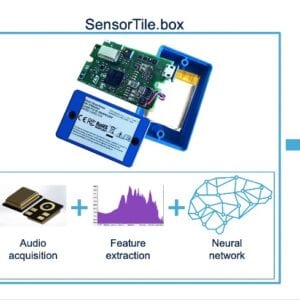Update Tuesday, November 4, 2020
ST recently held an updated version of the Webinar on Power Management and it is now available on demand. Anyone who missed it or those who wish to rewatch it can thus get a copy by simply submitting their email. As we explained, the talk offers critical information on the STPMIC1 as well as our buck regulator with working voltages of up to 60 V. The webinar also covers high-performance LDOs for both 5 V and 24 V buses. The session takes a practical point of view by analyzing where the products would fit in real world designs and how engineers can improve the overall efficiency or reliability.
Original Text, July 7, 2020
Webinar on Power Management: To improve the accessibility of our content, please find the audio version of this blog post.
Today, ST will hold a webinar on power management solutions for IoT and industrial applications. Unfortunately, too many teams still view power devices as commodities, only to suffer significant breakdowns, delays, or recalls because of a faulty design. It can especially be an issue when working on industrial applications because certifications and harsher operating conditions often require a more robust system. Hence, among other things, the webinar will focus buck regulators for working voltages of up to 60 V or devices with a particularly low quiescent current. The presentation will also cover low dropout converters for 5 V and 24 V buses as well as our STPMIC1 power management IC. The device includes 14 output Rails, four buck switched-mode power supplies, and works great for applications processor the rely on external RAM, flash, and a slew of other devices.
Power Management with STPMIC1
ST introduced the STPMIC1 with the STM32MP1, our first STM32 microprocessor. Designing for an MPU and the many external components necessary is a complex subject matter. As a result, we came up with the STPMIC1 to vastly facilitate the conception of the power stage. We recently delved into Octavo and their OSD32MP15x SiP that heavily relies on our power management IC. Thanks to the STPMIC1 wide power input voltage range, its six LDOs, and its boost SMPS, the System-in-Package can power the STM32MP1, multiple memory configurations, and three USB ports. Octavo also explained that using the IC from ST also enabled them to eliminate some bulk and bypass capacitors, thus simplifying their designs, reducing their costs, and increasing the system’s overall reliability. Taking part in today’s webinar will ensure attendees can more easily enjoy the same benefits.
Power Management with Flexibility and Efficiency
The rest of the webinar will touch on our vast catalog of power devices. Any attempt at exhaustivity would be futile, but attendees will leave with a better understanding of some of our design principles, such as flexibility and efficiency. For instance, last year, we introduced the ST1PS01, a nano-quiescent step-down converter with the lowest output in the industry. Similarly, our LDOs are knowns for their fast response and low quiescent currents thanks to innovations in control loops as well as overall architectures. Another example is our A7987, which offers a monolithic architecture for higher integration, while still providing flexible current limitations and an innovative control system that ensures a low quiescent current. The webinar will also help engineers protect their systems against electrostatic discharges.




